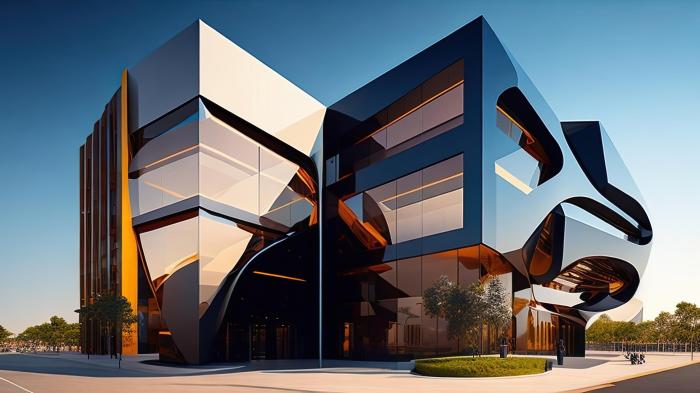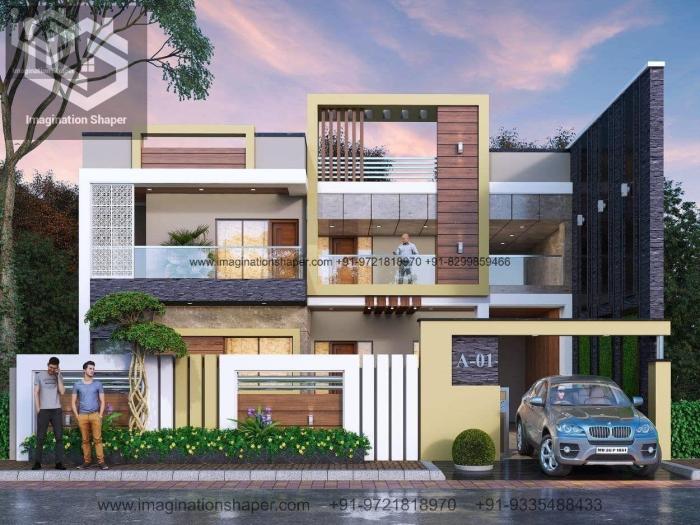Crafting a Vision: Exploring the World of Building Design
As building design takes center stage, this opening passage beckons readers into a world crafted with good knowledge, ensuring a reading experience that is both absorbing and distinctly original. From the intricate details of layout to the vibrant play of colors, building design encapsulates the essence of architectural ingenuity.
Let's delve into the fascinating realm where functionality meets aesthetics in perfect harmony.
Building design is not merely about creating structures; it's about weaving stories through architecture, where every element serves a purpose and every line drawn has a meaning. Join us on this journey as we uncover the layers of artistry and practicality that define the very fabric of our built environment.
Importance of Building Design

Building design plays a crucial role in architecture as it not only determines the structure's appearance but also influences its functionality and efficiency. Here's why building design is essential:
Impact on Functionality and Aesthetics
Building design directly impacts how a space is utilized and experienced by its occupants. A well-thought-out design can optimize the layout for specific functions, ensuring that the building serves its purpose effectively. Additionally, the aesthetic appeal of a building design contributes to the overall ambiance and impression it creates, influencing the perception of the space by both inhabitants and visitors.
Role in Sustainability and Energy Efficiency
Building design plays a significant role in promoting sustainability and energy efficiency. By incorporating green building practices such as natural lighting, ventilation, and energy-efficient systems, designers can reduce the environmental impact of buildings and lower operational costs. Sustainable design principles aim to create spaces that are environmentally responsible, resource-efficient, and healthy for occupants, contributing to a more sustainable future.
Elements of Building Design

When it comes to building design, there are several key elements that play a crucial role in shaping the overall outcome of a structure. These elements include the layout, materials used, and structural components. Additionally, factors such as natural light, ventilation, color, texture, and form also significantly impact the design and functionality of a building.
Importance of Natural Light and Ventilation
Natural light and ventilation are essential elements in building design as they not only enhance the aesthetics of a space but also contribute to the well-being and comfort of occupants. Properly designed openings for natural light and ventilation can help reduce energy consumption, improve indoor air quality, and create a more pleasant environment for occupants.
- Natural light: Natural light not only reduces the need for artificial lighting but also has a positive impact on mood, productivity, and overall health. Incorporating features such as large windows, skylights, and light shelves can maximize the penetration of natural light into a space.
- Ventilation: Proper ventilation is crucial for maintaining indoor air quality and regulating temperature and humidity levels. Well-designed ventilation systems help prevent the buildup of pollutants and mold, ensuring a healthy and comfortable indoor environment.
Significance of Color, Texture, and Form
Color, texture, and form are design elements that can greatly influence the visual appeal and functionality of a building. These elements play a key role in creating a sense of harmony, balance, and coherence in architectural design.
- Color: The choice of color can evoke specific emotions, create visual interest, and define the character of a space. By selecting the right color palette, architects can enhance the overall mood and atmosphere of a building.
- Texture: Texture adds depth and tactile quality to a building, creating visual and sensory interest. Incorporating different textures through materials such as wood, stone, glass, or metal can enhance the aesthetics and richness of a space.
- Form: The form of a building refers to its shape, structure, and overall composition. A well-defined form can establish a strong visual identity, optimize spatial efficiency, and create a sense of unity and coherence in design.
Sustainable Design Practices
When it comes to sustainable design practices, there are several principles that designers can incorporate into building design to reduce environmental impact and increase energy efficiency.
Passive Heating and Cooling
Passive heating and cooling is a sustainable design principle that focuses on utilizing natural sources of heat and ventilation to regulate indoor temperatures
Green Building Materials
Using green building materials is essential for sustainable design. Examples include recycled steel, bamboo, straw bales, and reclaimed wood. These materials are environmentally friendly and contribute to reducing the carbon footprint of a building.
Renewable Energy Sources
Incorporating renewable energy sources such as solar panels, wind turbines, and geothermal heating systems into building design can significantly reduce reliance on non-renewable energy sources. This not only helps lower energy costs but also decreases greenhouse gas emissions, making the building more environmentally friendly.
Technology in Building Design
Building design has been greatly impacted by advancements in technology, with tools like Building Information Modeling (BIM) leading the way in revolutionizing design processes. Virtual reality and augmented reality are also being increasingly used to visualize building designs in a more immersive and interactive way.
Additionally, parametric design tools are playing a significant role in influencing complex architectural forms by allowing designers to create intricate and dynamic structures that were once difficult to achieve.
Building Information Modeling (BIM)
Building Information Modeling (BIM) is a digital representation of the physical and functional characteristics of a building. It allows architects, engineers, and construction professionals to collaborate on a single platform, providing a comprehensive view of the project. With BIM, stakeholders can visualize the building in 3D, analyze its performance, and detect potential clashes or issues before construction even begins.
This technology streamlines the design process, improves communication, and ultimately leads to more efficient and sustainable buildings.
Virtual Reality and Augmented Reality
Virtual reality (VR) and augmented reality (AR) have transformed the way building designs are visualized. Designers and clients can now experience a building in a realistic virtual environment, allowing for better decision-making and understanding of spatial relationships. VR and AR also enable stakeholders to explore different design options, simulate real-world conditions, and detect any design flaws early on.
This immersive technology is enhancing the design process and improving overall project outcomes.
Parametric Design Tools
Parametric design tools are software programs that use algorithms to generate and manipulate complex architectural forms. These tools allow designers to create intricate patterns, shapes, and structures that respond to specific parameters or constraints. By adjusting variables and inputs, designers can explore a wide range of design possibilities and optimize the performance of a building.
Parametric design tools facilitate the creation of innovative and sustainable designs that push the boundaries of traditional architecture.
Cultural Influences on Building Design
Cultural heritage and traditions play a significant role in shaping building design, reflecting the beliefs, values, and practices of a particular society. Additionally, local climate and geography also heavily influence design choices, ensuring that buildings are functional and sustainable within their environment.
Many iconic buildings around the world showcase these cultural influences in their distinctive designs.
Impact of Cultural Heritage and Traditions
Cultural heritage and traditions impact building design by influencing architectural styles, materials used, decorative elements, and overall layout. For example, traditional Japanese architecture often incorporates natural materials like wood and paper, reflecting the connection to nature and emphasis on simplicity and harmony.
Influence of Local Climate and Geography
Local climate and geography are key factors in determining design choices such as building orientation, ventilation, insulation, and use of shading devices. In hot and arid regions, buildings may feature courtyards for cooling purposes, while in tropical areas, elevated structures with open spaces allow for natural airflow.
Examples of Iconic Buildings
- The Taj Mahal in India showcases intricate Mughal architecture, blending Persian, Islamic, and Indian design elements to create a symbol of love and beauty.
- The Sydney Opera House in Australia reflects the sailboats on the harbor, with its distinctive shell-like roof design influenced by the surrounding waterfront landscape.
- The Guggenheim Museum in Spain, designed by Frank Gehry, showcases deconstructivist architecture, breaking away from traditional forms and reflecting a sense of movement and fluidity.
Closing Notes

In the tapestry of architecture, building design stands as a testament to human creativity and innovation. From sustainable practices to cultural influences, each aspect weaves together to create a narrative of our past, present, and future. As we conclude our exploration, let's remember that building design is more than just construction; it's a reflection of our aspirations and values, shaping the world we inhabit.
Questions Often Asked
How does building design impact sustainability?
Building design plays a crucial role in sustainability by incorporating features like natural lighting, proper ventilation, and energy-efficient materials to reduce environmental impact.
What are the key elements of building design?
The key elements include layout, materials, structural components, natural light, ventilation, color, texture, and form, all of which contribute to the functionality and aesthetics of a building.
How do cultural influences shape building design?
Cultural heritage and traditions influence building design by reflecting local customs, beliefs, and history, creating structures that resonate with the community's identity.




